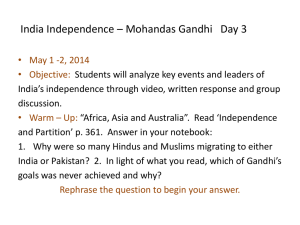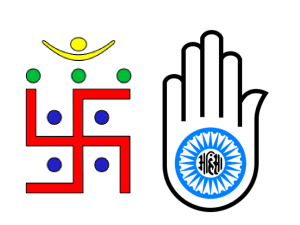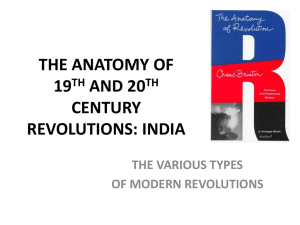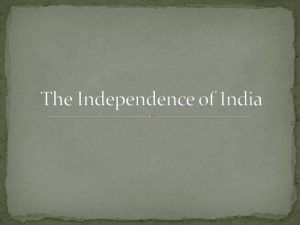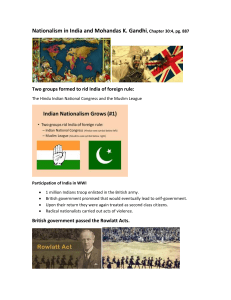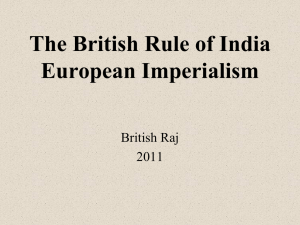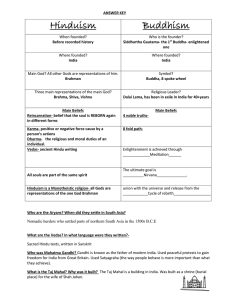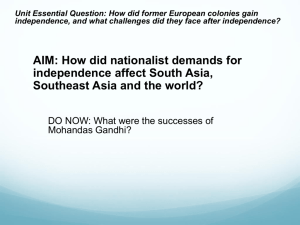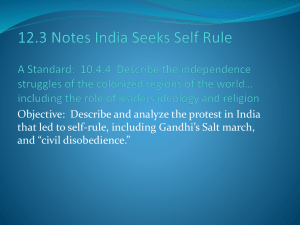Indian Independence
advertisement
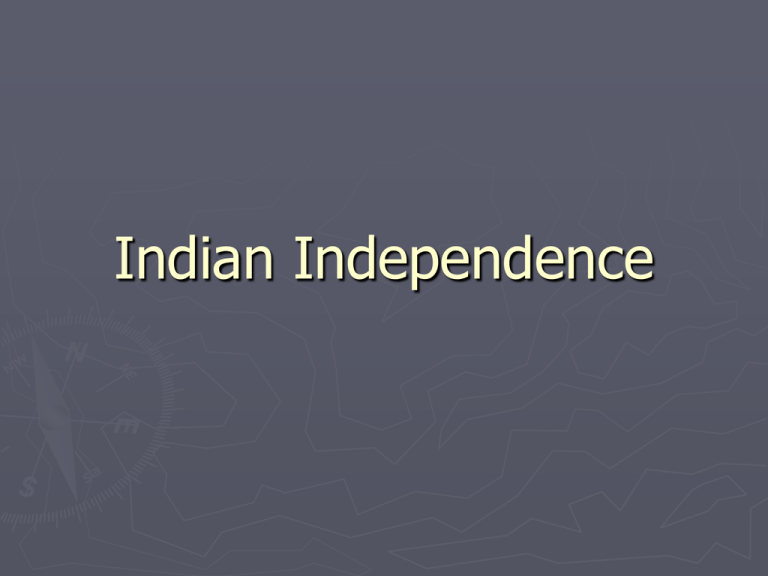
Indian Independence Amritsar Massacre ► 1919- Indian nationalist increase their demands for freedom. ► Britain began limiting freedoms (press, speech) ► General Reginald Dyer banned all public gatherings Continued ► April 13, 1919, over 10,000 Indians gathered in Amritsar in peaceful protest. ► General Dyer order his troops to open fire on men, women and children. ► 379 Indians killed and over 1,100 wounded Gandhi's principles ► Influences- Studied law in England, Learned non-violence in South Africa ► Influences- Studied Hindu, Christian ideas as well as Henry David Thoreau ► Satyagraha- Means “truth force”- method of non-violent resistance ► Civil disobedience- The refusal to obey unjust laws Salt March ► British controlled India’s salt. Indians could not produce salt and it was heavily taxed ► Gandhi led followers on a 200 mile march to the sea where they began making salt. ► Gandhi and over 50,000 others were arrested ► The salt march increased international support for Indian independence Quit India Movement ► During WWII most Indians had no desire to fight in support of the British. ► INC refused to support the war without a guarantee of immediate independence ► The INC urged Indians to follow a policy of non-cooperation with the British. ► 20,000 congress members were arrested ► War-weakened could no longer control India Hindu-Muslim Conflicts ► Muhammad Ali Jinnah and the Muslim League demanded a separate Muslim nation ► 1946, rioting broke out between Hindus and Muslims ► 1947, India gains independence into two nations ► Hindu dominated India and Muslim dominated Pakistan Formation of Pakistan ► Jinnah- became governor general of Pakistan ► Jawaharlal Nehru became prime minister of India ► Mass violence broke out between Hindus and Muslims despite religious toleration of both nations ► More than 500,000 people were killed. Gandhi’s Assassination ► January 1948- Gandhi falls victim to the violence. ► Killed by a Hindu extremist who believed Gandhi betrayed his own people
